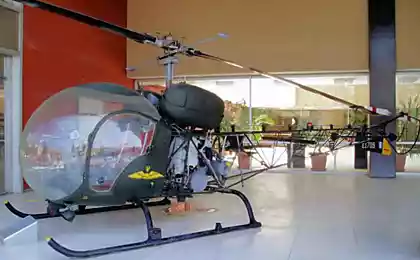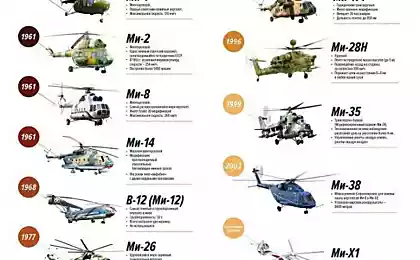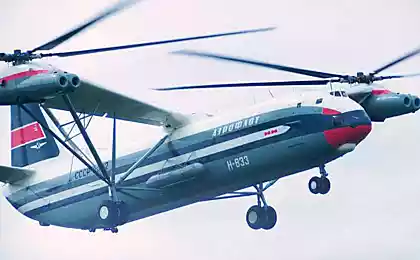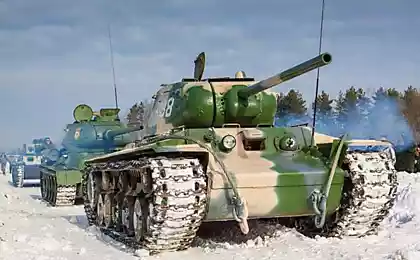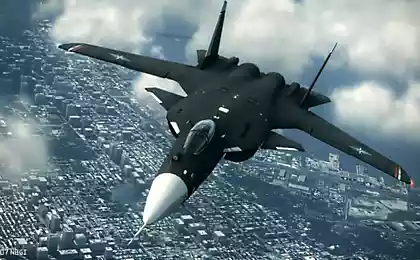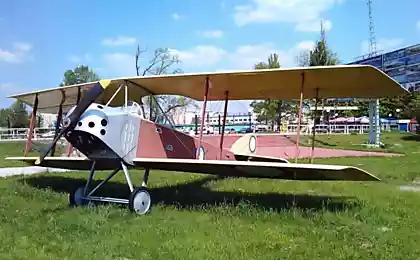1646
Museum-helicopter-12
Helicopter V-12 is the most severe and lifting helicopter in the world. It was created in 1967 to cost centers under the leadership of Mil.

In 1969, it set a world record for carrying capacity - 40 tons. A distinctive feature is the lateral position of the screws on the reverse delta wings, which are driven by four engines D-25VF. B-12 was designed as a super-heavy transport helicopter with a carrying capacity of not less than 30 tons, to transport components of intercontinental ballistic missiles for parts of the Strategic Missile Forces, the creation of positional areas for which it was planned in areas without paved roads.
In the early 50s there is a need in the heavyweight destantno transport helicopters capable of transporting military equipment weighing up to 6 tons: artillery with tractors, trucks and airborne self-propelled. That was the helicopter Mi-6, with a five-blade main rotor with a diameter of over 30 m and engines D-25B created on EDO Soloviev PA. Air giant Mi-6 marked the beginning of a new direction in the development of world helicopter - the creation of heavy-lift helicopters. In 1961 Dementiev formally approved the assignment to elaborate helicopter lifting capacity 20-25t. May 3, 1962 was followed by a decree of the Council of Ministers of the USSR on the development of the B-12 cargo cabin similar to the cockpit of a giant Antonov An-22.

To reduce the cost of development, and to accelerate the construction and deployment of the helicopter designers decided to create it by doubling the propeller group of Mi-6 (rotor, power unit, main gearbox and control system), a tested and is in mass production and wide use. The project was a giant air chetyrёhdvigatelny unit for twin screw transverse scheme.
At the ends of each truss console-wing propeller-nacelle was with two turbine engines D-25VF capacity of 6500 hp each. The wing had a slight narrowing of the reverse cross V. Inside it passes the transmission shaft, the timing turns both screws. Fuel was in the wing and external fuel tanks suspended.
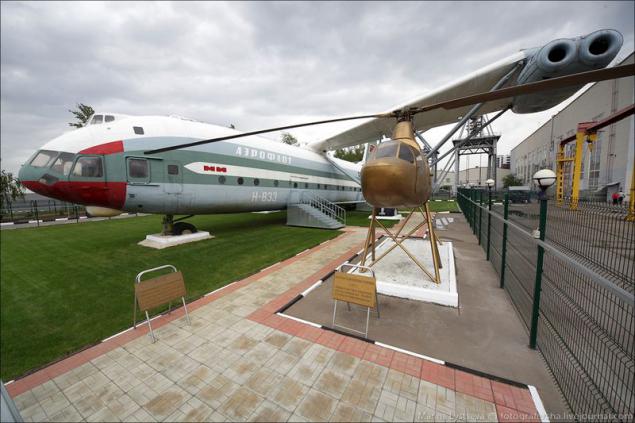
4. rotors (picture missing) five lobes, have the same design as the Mi-6 and are arranged with a minimum overlap of ~ 3 m, all-metal blade of the MI-6 have been replaced with new blades composite construction with a steel spar, fiberglass nose section and sections of the back of a foiled honeycomb.
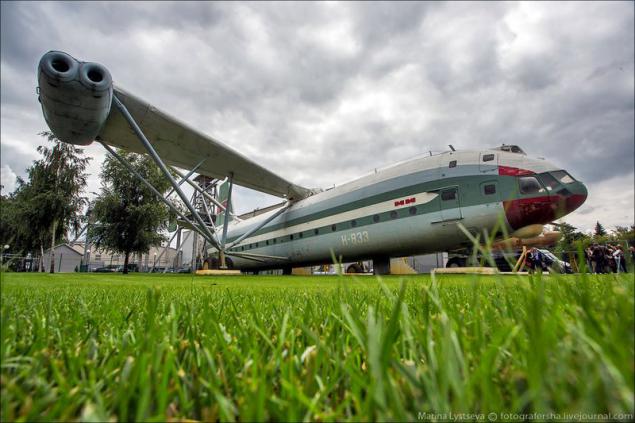
5. Cabin crew storey, at the bottom of the cabin placed two pilots, a flight engineer and bortelektrik at the top - a navigator and radio operator. Wing verhneraspolozhennoe, scale 28, 4 m, different reverse delta (end chord root twice) and large cross V (-), is supported by a truss struts connected to the fuselage and landing gear.

6. Chassis tricycle, non-retractable, with dual wheels on all supports and pnevmomaslyannymi dampers. Track chassis 13, 1 m, the base 12, 9 m on the fuselage in front of the ramp of the cargo hatch has additional support that is used to load the helicopter.
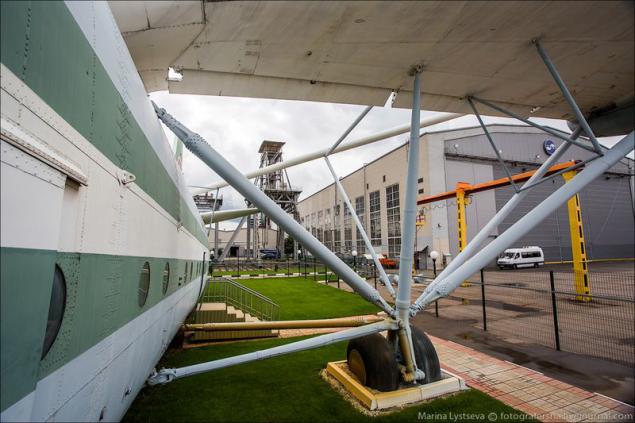
7. The plumage of the aircraft type, with large keel, rudder and stabilizer with elevators and endplate.
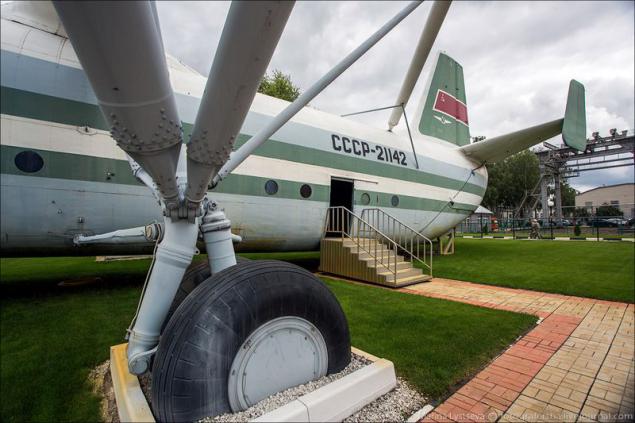
8. The fuselage of semi-monocoque construction has cargo cabin as the aircraft AN-22 of 28, 15 x 4, 4 x 4, 4 m with the rear cargo hatch with ladder dipping and side doors, and electric winch hoists for loading and different techniques.
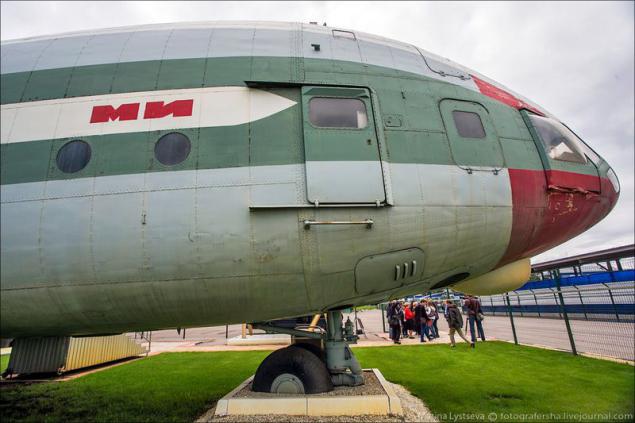
9. The power plant consists of four forced FCD D-25VF specially developed ACS chief designer PD Solovyov. The engines are installed in pairs in the nacelles on the wing tips.

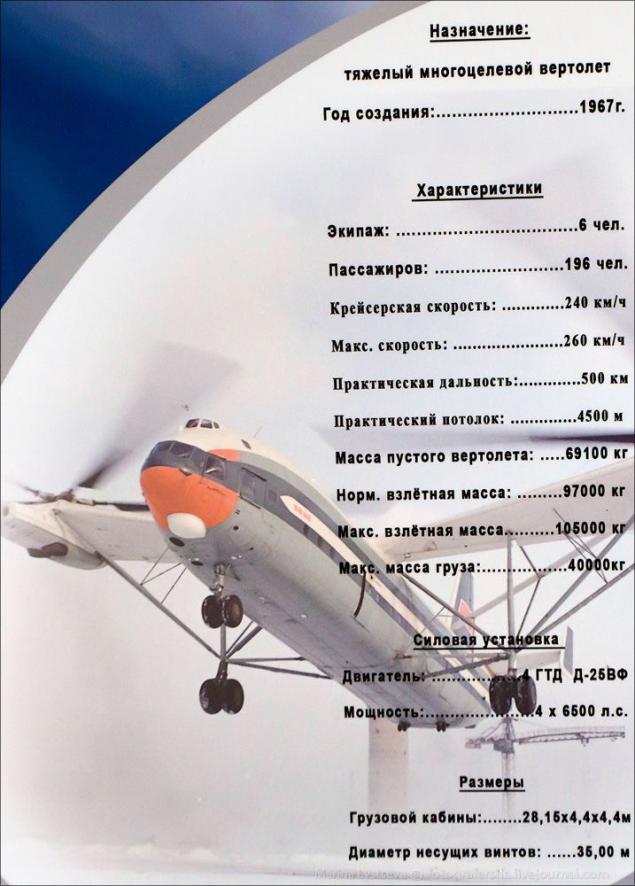
The first experimental helicopter is now a museum and is in storage at the suburban punk in the territory of a cost center on the eternal parking.

The second helicopter was handed over to the Air Force Museum in Monino.
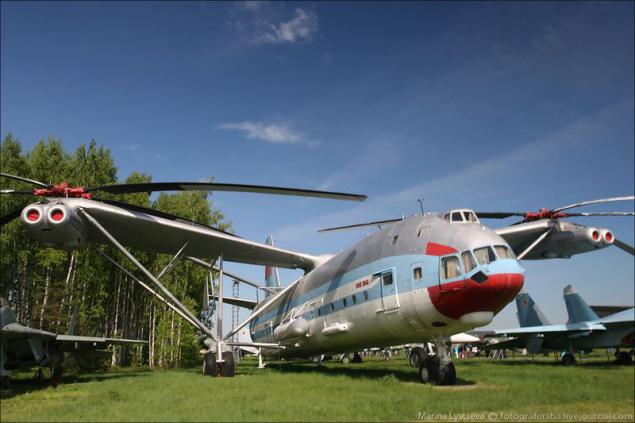
The cabin could accommodate 196 soldiers and 158 wounded on stretchers.
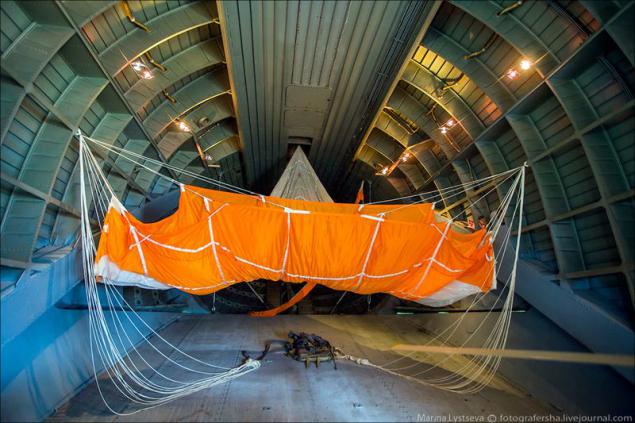
The first flight of the helicopter made July 10, 1968. In February 1969 she raised 31,030 kg payload to an altitude of 2910 m. August 6, 1969 B-12 lifted load to 44,205 kg to a height of 2255 meters, setting a world record for carrying capacity for helicopters which is not beaten yet. The second prototype B-12 made its first flight May 28, 1973.
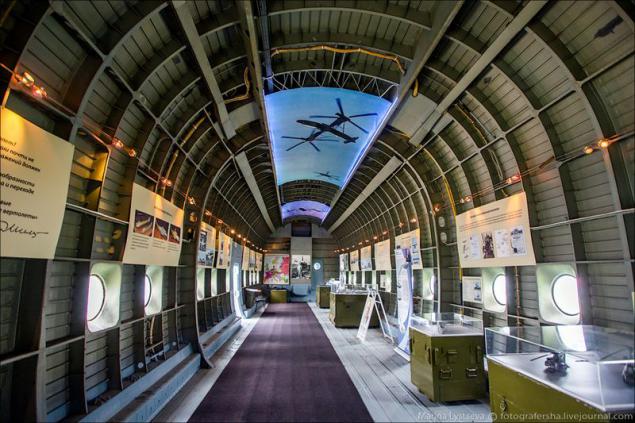
The first B-12, in whom I am (registration CCCP-21142 / H-833) was shown at an exhibition in Le Bourget in 1971. Here is the opinion of Sergei Sikorsky: "Before the engineering achievement, which is the Mi-12, you can only take my hat ... This helicopter is the only one of its kind and will be used to perform unique operations. I mean expedition in the Arctic or the search for oil deposits. The helicopter will replace the railway, where is still untouched by human hands ».
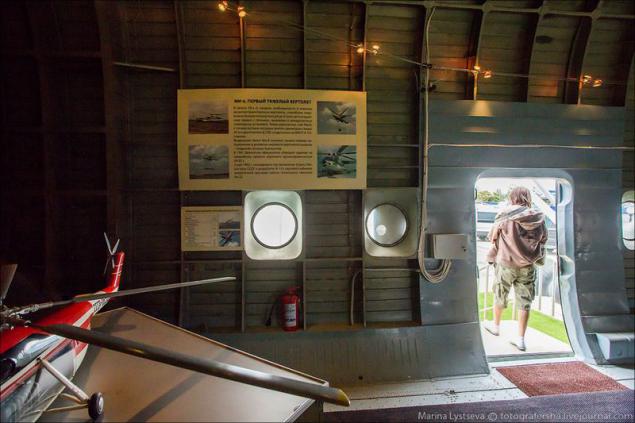
Despite the results achieved by carrying capacity, the program has been found to be ineffective - by this time the military no longer needed in the helicopter a carrying capacity through the establishment of the time more efficient and lighter strategic missiles on mobile launchers, and all the needs of the economy and the Armed Forces successfully met Mi-6 and Mi-10. Therefore the development of the B-12 was terminated.
Museum exhibits. Headphones are built into the leather helmet.
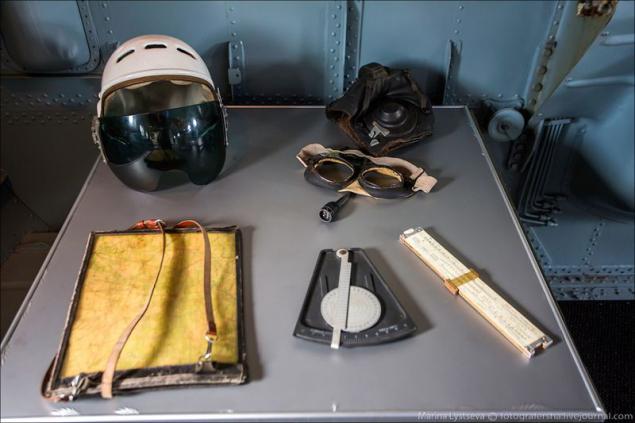
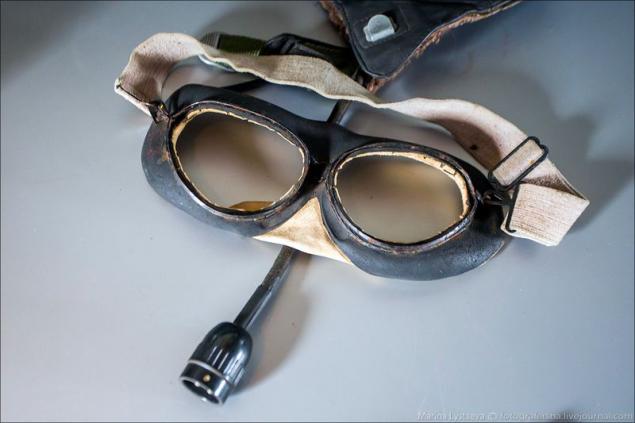
The cockpit, with kozhaleniyu was closed.
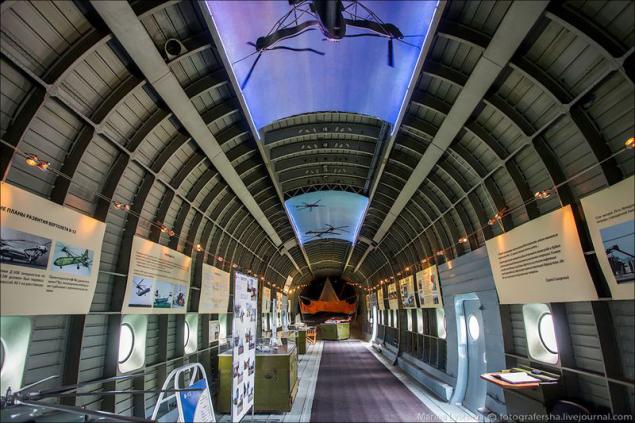

Mi-10. Flying crane on the basis of the Mi-6. The first flight - 1960, the deadline (hopefully) 2009 Currently not in use.

Next to the B-12 in the territory of the plant is also the first full-scale gelikopternaya installation created in 1947 and served as the prototype of the Mi-1.
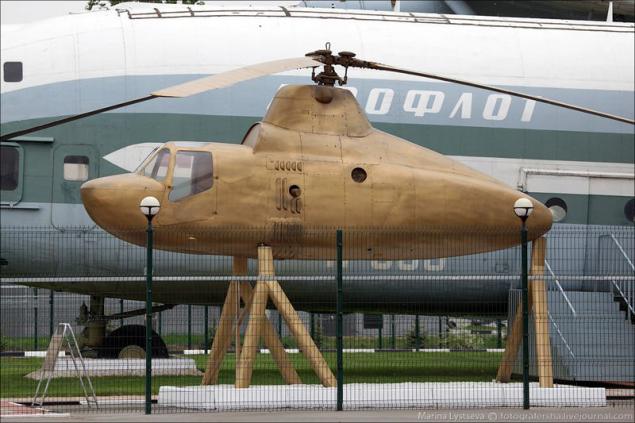
That's the beauty. Sadly of course, that the museum, on the other hand, well, that both copies have survived and not been cut.
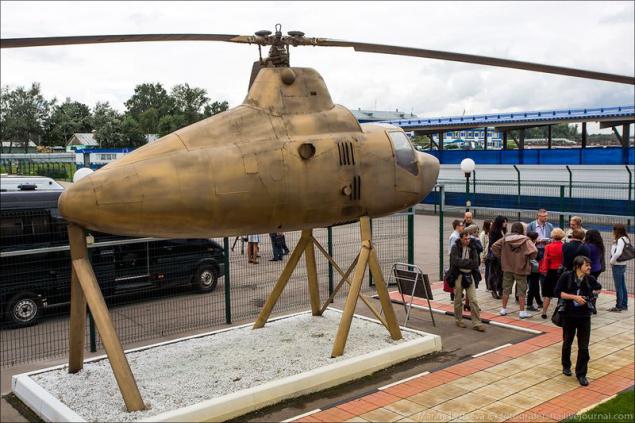
Video Flight:
Source: fotografersha.livejournal.com

In 1969, it set a world record for carrying capacity - 40 tons. A distinctive feature is the lateral position of the screws on the reverse delta wings, which are driven by four engines D-25VF. B-12 was designed as a super-heavy transport helicopter with a carrying capacity of not less than 30 tons, to transport components of intercontinental ballistic missiles for parts of the Strategic Missile Forces, the creation of positional areas for which it was planned in areas without paved roads.
In the early 50s there is a need in the heavyweight destantno transport helicopters capable of transporting military equipment weighing up to 6 tons: artillery with tractors, trucks and airborne self-propelled. That was the helicopter Mi-6, with a five-blade main rotor with a diameter of over 30 m and engines D-25B created on EDO Soloviev PA. Air giant Mi-6 marked the beginning of a new direction in the development of world helicopter - the creation of heavy-lift helicopters. In 1961 Dementiev formally approved the assignment to elaborate helicopter lifting capacity 20-25t. May 3, 1962 was followed by a decree of the Council of Ministers of the USSR on the development of the B-12 cargo cabin similar to the cockpit of a giant Antonov An-22.

To reduce the cost of development, and to accelerate the construction and deployment of the helicopter designers decided to create it by doubling the propeller group of Mi-6 (rotor, power unit, main gearbox and control system), a tested and is in mass production and wide use. The project was a giant air chetyrёhdvigatelny unit for twin screw transverse scheme.
At the ends of each truss console-wing propeller-nacelle was with two turbine engines D-25VF capacity of 6500 hp each. The wing had a slight narrowing of the reverse cross V. Inside it passes the transmission shaft, the timing turns both screws. Fuel was in the wing and external fuel tanks suspended.

4. rotors (picture missing) five lobes, have the same design as the Mi-6 and are arranged with a minimum overlap of ~ 3 m, all-metal blade of the MI-6 have been replaced with new blades composite construction with a steel spar, fiberglass nose section and sections of the back of a foiled honeycomb.

5. Cabin crew storey, at the bottom of the cabin placed two pilots, a flight engineer and bortelektrik at the top - a navigator and radio operator. Wing verhneraspolozhennoe, scale 28, 4 m, different reverse delta (end chord root twice) and large cross V (-), is supported by a truss struts connected to the fuselage and landing gear.

6. Chassis tricycle, non-retractable, with dual wheels on all supports and pnevmomaslyannymi dampers. Track chassis 13, 1 m, the base 12, 9 m on the fuselage in front of the ramp of the cargo hatch has additional support that is used to load the helicopter.

7. The plumage of the aircraft type, with large keel, rudder and stabilizer with elevators and endplate.

8. The fuselage of semi-monocoque construction has cargo cabin as the aircraft AN-22 of 28, 15 x 4, 4 x 4, 4 m with the rear cargo hatch with ladder dipping and side doors, and electric winch hoists for loading and different techniques.

9. The power plant consists of four forced FCD D-25VF specially developed ACS chief designer PD Solovyov. The engines are installed in pairs in the nacelles on the wing tips.


The first experimental helicopter is now a museum and is in storage at the suburban punk in the territory of a cost center on the eternal parking.

The second helicopter was handed over to the Air Force Museum in Monino.

The cabin could accommodate 196 soldiers and 158 wounded on stretchers.

The first flight of the helicopter made July 10, 1968. In February 1969 she raised 31,030 kg payload to an altitude of 2910 m. August 6, 1969 B-12 lifted load to 44,205 kg to a height of 2255 meters, setting a world record for carrying capacity for helicopters which is not beaten yet. The second prototype B-12 made its first flight May 28, 1973.

The first B-12, in whom I am (registration CCCP-21142 / H-833) was shown at an exhibition in Le Bourget in 1971. Here is the opinion of Sergei Sikorsky: "Before the engineering achievement, which is the Mi-12, you can only take my hat ... This helicopter is the only one of its kind and will be used to perform unique operations. I mean expedition in the Arctic or the search for oil deposits. The helicopter will replace the railway, where is still untouched by human hands ».

Despite the results achieved by carrying capacity, the program has been found to be ineffective - by this time the military no longer needed in the helicopter a carrying capacity through the establishment of the time more efficient and lighter strategic missiles on mobile launchers, and all the needs of the economy and the Armed Forces successfully met Mi-6 and Mi-10. Therefore the development of the B-12 was terminated.
Museum exhibits. Headphones are built into the leather helmet.


The cockpit, with kozhaleniyu was closed.


Mi-10. Flying crane on the basis of the Mi-6. The first flight - 1960, the deadline (hopefully) 2009 Currently not in use.

Next to the B-12 in the territory of the plant is also the first full-scale gelikopternaya installation created in 1947 and served as the prototype of the Mi-1.

That's the beauty. Sadly of course, that the museum, on the other hand, well, that both copies have survived and not been cut.

Video Flight:
Source: fotografersha.livejournal.com



